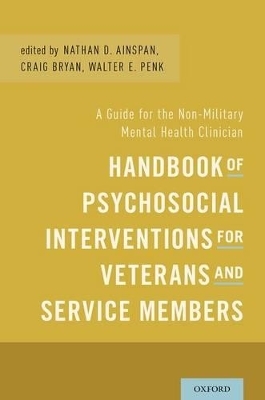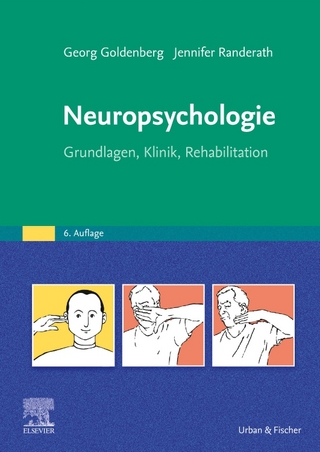
Handbook of Psychosocial Interventions for Veterans and Service Members
Oxford University Press Inc (Verlag)
978-0-19-935399-6 (ISBN)
The Handbook of Psychosocial Interventions for Veterans and Service Members is a "one stop" handbook for non-military clinicians working with service members, veterans, and their families. It brings together experts from the Department of Defense, the Department of Veterans Affairs, veteran service organizations, and academia to create the first comprehensive guidebook for civilian clinicians. In addition to covering psychiatric disorders such as depression, anxiety, and PTSD, this book also offers information about psychosocial topics that impact military personnel and their loved ones and can become part of treatment (e.g., employment or education options, financial matters, and parenting concerns), providing the most recent and cutting-edge research on the topics. Chapters are concise and practical, delivering the key information necessary to orient clinicians to the special needs of veterans and their families. The Handbook of Psychosocial Interventions for Veterans and Service Members is an essential resource for private practice mental health clinicians and primary care physicians, as well as a useful adjunct for VA and DOD psychologists and staff.
Nathan D. Ainspan, Ph.D., is the Research Psychologist with the Transition to Veterans Program Office (TVPO) of the Office of the Secretary of Defense. Dr. Ainspan has conducted research, written, and spoken extensively about the psychological impact of the transition from the military into civilian life. His research focus has been on improving civilian employment opportunities for returning service members and the psychosocial benefits that employment can have on wounded warriors and injured veterans and people with disabilities. Craig J. Bryan, PsyD, ABPP, is the Executive Director of the National Center for Veterans Studies and Assistant Professor in the Department of Psychology at The University of Utah. Dr. Bryan served on active duty in the U.S. Air Force as a clinical psychologist and deployed to Iraq in 2009. He currently researches suicide and PTSD in the military. Walter Erich Penk, PhD, ABPP, is a Professor in Psychiatry and Behavioral Sciences at Texas A&M College of Medicine. His clinical and research interests center on post-traumatic stress disorders. His first PTSD studies were published in 1981, focusing on psychosocial rehabilitation for PTSD and substance abuse among veterans. Currently, he concentrates on student veterans and combat veterans transitioning to civilian occupations.
Foreword by Nancy C. Bernardy
Foreword by Carl Andrew Castro
Preface
Acknowledgments
About the Editors
Contributors
Section One: Military Culture and Populations
1. Demographics and Characteristics of the US Military and Veteran Populations
Jomana Amara and Ann Hendricks
2. Military Rules and Regulations
William Brim
3. Unique Challenges of National Guard and Reserve Service Members
Jaine Darwin
4. Roles and Challenges of Women in the Military
Jomana Amara and Maxine Krengel
5. Lesbian, Gay, and Bisexual Service Members
Scott L. Johnston, Jennifer Webb-Murphy, and Jagruti P. Bhakta
6. Transgender Service Members and Veterans
Jacob Eleazer
7. Creating a Respectful, Welcoming Clinical Environment for Lesbian, Gay, Bisexual and Transgender Veterans
Michael Kauth, Jillian C. Shipherd, and Alexis R. Matza
Section Two: Assessing and Treating Psychiatric Disorders
8. Posttraumatic Stress Disorder
Alan L. Peterson, Adam O. Lynch, Katherine A. Dondanville, and Edward C. Wright
9. Psychosocial Rehabilitation Strategies for Social and Occupational Functioning Associated with Posttraumatic Stress Disorder (PTSD)
Charles Drebing, Lisa Mueller, Christopher Waltrous, and Walter Penk
10. Depression, Anxiety, and Other Disorders
Bryann B. DeBeer, Brian D. Konecky, and Eric C. Meyer
11. Sleep Disturbances
Kristi E. Pruiksma, Daniel J. Taylor, and Alan L. Peterson
12. Psychosocial Interventions for Traumatic Brain Injury (TBI)
Walter Penk, Dolores Little, and Nathan Ainspan
13. Substance Use Disorders Among Veterans
Amee B. Patel, Sandra B. Morissette, Lori K. Holleran Steiker, and Audrey M. Sorrells
Section Three: Clinical Issues
14. Suicidal Behavior Among Military Personnel and Veterans
Craig J. Bryan
15. Nightmares
Brook M. Sims, Oommen Mammen, and Anne Germain
16. Aggression and Anger in Veterans with Posttraumatic Stress Disorder
Elizabeth E. Van Voorhees, Paul A. Dennis, Eric B. Elbogen, Patrick S. Calhoun, and Jean C. Beckham
17. Treating Injury and Chronic Pain in Military and Veteran Populations
Don McGeary, Cindy McGeary, and Tabatha Blount
Section Four: Psychosocial Interventions
18. Money Management for Returning Service Members and Veterans
Anne Klee, Moe Armstrong, and Laurie Harkness
19. Educational and Employment Options for Veterans
Nathan D. Ainspan and Alexa Smith-Osborne
20. Facilitating Recovery from Moral and Spiritual Injuries
Jennifer H. Wortmann, Alyssa Boasso, Yonit Schorr, Maria M. Steenkamp, and Brett T. Litz
21. Facilitating Growth After Trauma: Cognitive and Interpersonal Considerations
Lauren M. Sippel and Judith A. Lyons
Section Five: Military Families
22. Unique Challenges Facing Military Families
Shelley M. MacDermid Wadsworth
23. Parenting Issues in Military and Veteran Families
Shelley R. Tom and Shirley M. Glynn
24. Helping the Child Cope with Injury to the Parent
Kay Allensworth and Alice Ann Holland
25. Helping Military Children Cope with the Death of a Parent
Lynda C. Davis
26. Couple Therapy for PTSD
Nicole D. Pukay-Martin, Steffany J. Fredman, and Candice M. Monson
Section Six: Clinical Practices and Administrative Issues
27. Providing service under TRICARE
Troy Mosley, Angela J. Williams-Steele, and Kate McGraw
28. Working with the VA and Other Medical Personnel
Elisa J. Flynn and Suzy B. Gulliver
29. Telemedicine in Delivering Care
Alexander V. Libin, Manon Schalden, Ellen Danford, and Joel Scholten
30. Judicious Reliance Upon Psychotropic Medications
Patrick H. DeLeon, Anita B. Brown, and Sean P. Convoy
31. Ethics Guiding Psychosocial Rehabilitation
Walter Erich Penk, Dolores Little, and Nathan Ainspan
32. Addressing Mental Health Stigma
Craig J. Bryan
Appendix 1. Recommended References
Appendix 2. Rommended Websites and Web Resources
Appendix 3. Advice From Our Contributors
Appendix 4. Common Military Abbreviations
Appendix 5. Comparative Military Ranks
Index
| Erscheinungsdatum | 09.04.2016 |
|---|---|
| Verlagsort | New York |
| Sprache | englisch |
| Maße | 155 x 234 mm |
| Gewicht | 635 g |
| Themenwelt | Geisteswissenschaften ► Psychologie ► Biopsychologie / Neurowissenschaften |
| Geisteswissenschaften ► Psychologie ► Klinische Psychologie | |
| Medizin / Pharmazie ► Medizinische Fachgebiete ► Psychiatrie / Psychotherapie | |
| Sozialwissenschaften ► Politik / Verwaltung | |
| ISBN-10 | 0-19-935399-9 / 0199353999 |
| ISBN-13 | 978-0-19-935399-6 / 9780199353996 |
| Zustand | Neuware |
| Haben Sie eine Frage zum Produkt? |
aus dem Bereich


